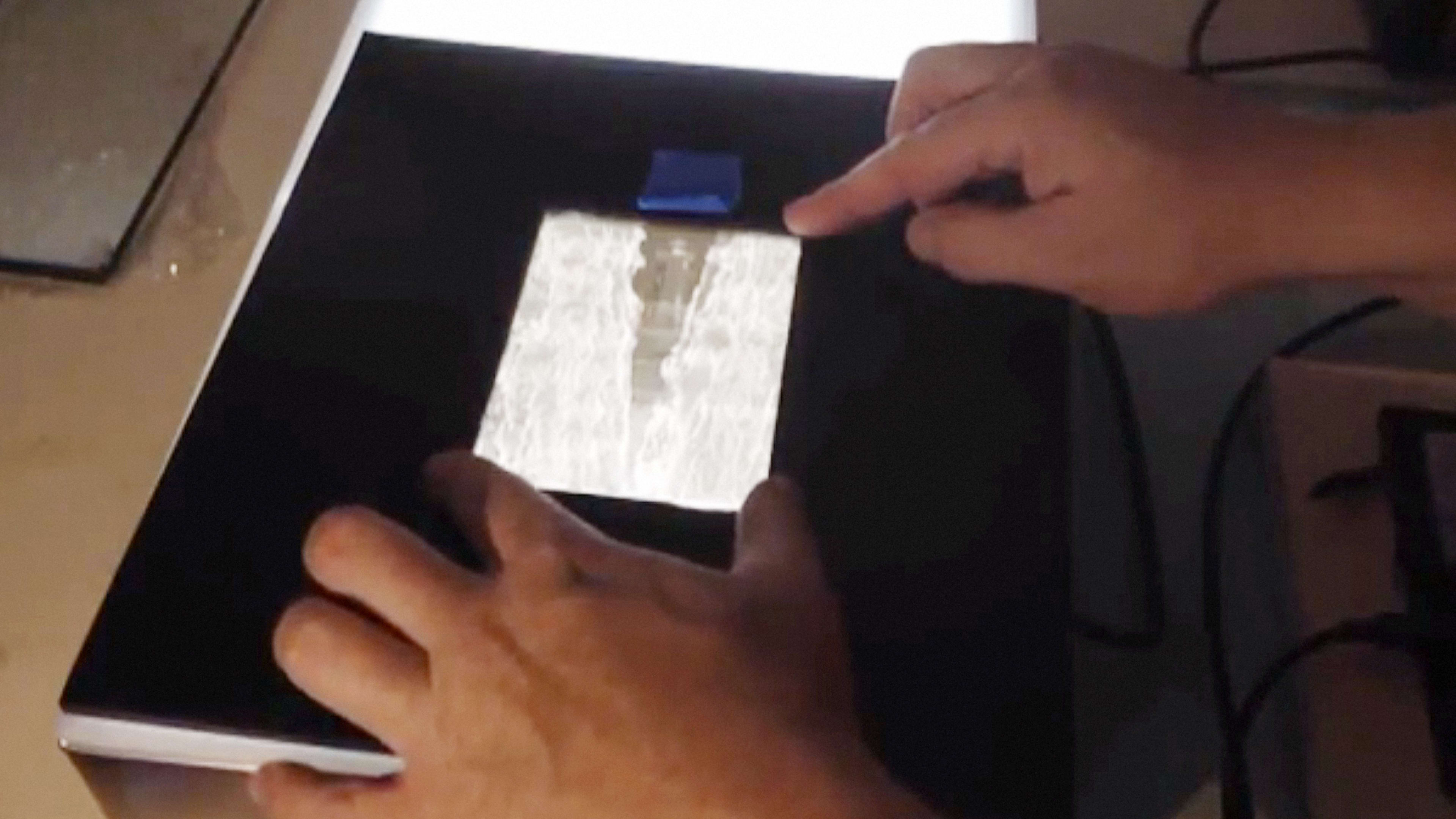Until now, if you wanted to step up from desktop scanners to professional film negative scanning, you needed to be willing to drop a pretty penny. That’s why these hackers bolted together their own DIY automatic film scanner with little more than a DSLR, base materials, and a lightbox.
From tiny toilet paper tubes to cardboard and clamps, the DIY DSLR lightbox has been around for a few years, but only for traditional 35mm film, the dominant format for film and still photography. This new model is specifically for large-format film, from the popular 4″x5″ format (which is 16 times the size of a 35mm frame–and thus has 16 times the resolution) up to 8″x10″, after which it reaches “ultra large” format resolution.
Consumer desktop scanners have always lacked the resolution that superior professional options like drum scanners or high-end flatbed scanners offer, but both alternatives are costly (drum scanners in particular can go for upwards of $25,000) and run on older computer systems, making them hard for consumers to manage.
This DIY rig, on the other hand, appears to cost a fraction of the price for quality superior to a high-end flatbed. The scanner, built by Large Format Photography forum user Peter de Smidt, is controlled by an Adafruit Uno microcontroller with two Easystepper drivers for axis movement and a Nikon D600 (likely the costliest component at $2,000 retail) with a 55mm lens. For a 4”x5” negative, the scanner takes 25 individual scans using the D600 and then stitches them together with software called “Scanduino” built by Flickr user ReallySmall–which is also used in a parallel project by Smidt’s Large Format Photography forum co-conspirator Daniel Moore. Though extremely large formats might need an expanded rig, the lightbox used appears to support up to 8”x10” negatives.
Recognize your brand’s excellence by applying to this year’s Brands That Matter Awards before the early-rate deadline, May 3.
